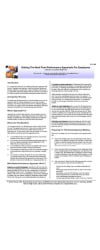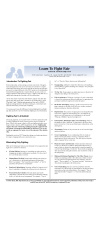Learning More About The Power of Language
For more on interpersonal and business communication (including social media) visit the Communication Resource Center
If there’s a best jumping off point for learning about the power of language, and fine tuning how you use it to create more harmonious relationships, this is it:It’s pretty straight-forward.
We ALL confuse our intent with the actual meaning of what we communicate.
Let’s say you have something in your head you want to get across. You have some sort of intent about what you want the other person to understand. However, it’s YOUR intent, in your head, and it’s not yet (and may never be) in the head of the other person.
The meaning of your communication is different. Meaning is about what the OTHER person “gets” from what you say, and that’s something THAT person constructs in his or her own head based on a number of factors including:
- YOUR tone of voice
- The specific words YOU choose
- The context of the conversation
- The experiences of the other person with you, the subject
- The current emotional state of the other person
- The specific meanings the other person has for each of the words you use, both in terms of the actual meaning (denotative meaning), and their emotional associations with those words (connotative meaning).
While your INTENT is clear in YOUR head, there are many factors that involve the translation of your intent to what ends up as meaning in the head of the other person.
Intent Vs Meaning Confusion Explains A Lot of Miscommunication
Much of miscommunication which goes unnoticed and unaddressed is caused by confusing intent with meaning. That’s because we are almost always focusing on what we WANT to get across, rather than focusing on what the other person is creating from what we say.
Miscommunication will always happen. In fact, it’s amazing that we ever communicate clearly at all if you consider all the things that are involved in the translation from one head to another.
The Power of Language Learning Point
While you need to be clear about your communication INTENT, you also need to focus on the MEANING THE OTHER PERSON creates based on what you say.
In addition you need to be aware that you cannot CONTROL completely the meaning other people take from what you say. That said, you have tremendous influence in improving the match between your INTENT and the MEANING.,We illustrated the power of small changes in our example using the question: “Why in the world are you staring at me”
What’s even more important is you will learn what to say instead of the “fightin’ words”. For every common bad phrasing, there are several much better phrasings, so we’ll teach those to you. And, you’ll learn why some phrases cause conflict and unpleasant, pointless arguments, and why some phrases build trust, intimacy and harmony.






